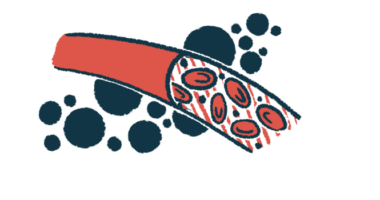CIT GAP Funds Invests in OxiWear Device for PH Patients

The Center for Innovative Technology (CIT) GAP Funds has invested in OxiWear and its ear-wearable device designed to continuously monitor blood oxygen levels in people with pulmonary hypertension (PH) and alert them when levels fall below safe thresholds.
Oxiwear is expected to help patients get the help they need in due time, when dangerous drops of blood oxygen levels may occur unnoticed due to the absence of visible symptoms. That condition is called silent hypoxia and it increases the risk of heart failure in people with PH.
The investment will be used to support OxiWear’s growth, conduct further research, and expand relationships with more hospitals and pharmacies.
“As someone who suffers from PH, I have experienced firsthand the dangerous complications of silent hypoxia from this condition,” Shavini Fernando, OxiWear’s founder and CEO, said in a press release.
“With OxiWear, anyone who suffers from PH can easily contact emergency services if their oxygen levels drop to a dangerous level,” added Fernando, who is a video game, virtual reality and web designer and developer.
Tom Weithman, managing director of CIT GAP Funds, said “there is no other device available to continuously monitor oxygen levels,” making OxiWear “a game changer for those affected by the complications of pulmonary hypertension” and potentially “the difference between safety and danger.”
“We are very excited to have the support of CIT GAP Funds, whose investment will allow us to expand our market reach and benefit even more patients with our devices,” Fernando said.
PH is characterized by the narrowing of the pulmonary arteries, restricting blood and oxygen flow, and raising blood pressure (hypertension).
“After several near-death experiences, I invented OxiWear as a personalized tool to support myself and the greater PH community so we can spend more time living our lives,” said Fernando.
The OxiWear device was created with the belief that “most of the deaths can be prevented by having an alert in time,” the company states in its webpage.
The small, modern earpiece, according to OxiWear, enables monitoring blood oxygen levels on a mobile application and produces a warning vibration when levels drop below the user-defined safe threshold.
During severe drops, the user can call 911 by clicking a button and sending text-alerts with their location to emergency contacts. OxiWear helps seek assistance for the patients immediately, to prevent potential harm.
The device will be sold as a U.S. Food and Drug Administration medical device and a consumer device. The Arlington, Virginia-based company plans to license its live data platform for team performance monitoring, and its data and tech for research uses.
“Shavini and her team are in a great position to expand and reach more medical departments, nursing homes and more locations serving patients with PH,” Weithman said.
“We are excited to support OxiWear in their endeavors and lifesaving mission,” Weithman added.
CIT GAP Funds makes early-stage-investments in Virginia-based technology, clean energy, and life science companies deemed with a high potential to grow rapidly.
OxiWear also gained increased interest during the COVID-19 pandemic, as its use could help identify people infected with the SARS-CoV-2 virus who are showing no symptoms despite low oxygen levels. It also may help when patients are sent home and the device continues to monitor their vitals remotely.







